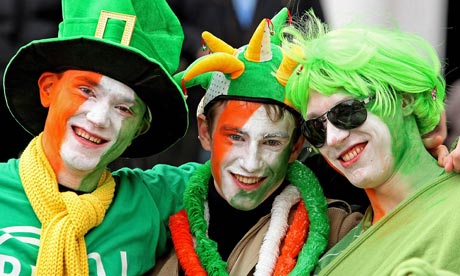March 19th is Father’s Day - “El Dia del Padre”
Since the Catholic Church holds a significant influence on Spanish culture, Father’s Day, known in Spanish as ´El día del padre´ is celebrated in Spain on St. Joseph's Day, which falls on March 19. St. Joseph's Day is a Roman Catholic feast day designated to commemorate the life of the patron saint of carpenters – Joseph - who set the example of fatherhood and good husband as the foster father of Jesus and husband of the Blessed Virgin Mary.
Until very recently, Father’s Day was a non-working holiday in Spain. This holiday is considered to be extremely important in Spain as it helps acknowledge the contribution of fathers to individual families and to societies as large. It is also the time to honour those family members and friends who fulfil the role of father-figures. Usually the whole family gets together for a big feast and to give small gifts to their father figure. In some parts of Spain it is celebrated in conjuction thefiesta of Las Fallas.
According to history, a woman from the Washington State area in the United States named Sonora Smart Dodd decided upon the death of her beloved father in 1909, to honor him for caring, protecting and raising 6 children on his own after he was widowed. She chose to celebrate his effort and love for his kids in the month of June, (her father’s birthday) as a way of saying thank you. Little did she know that fifteen years later, in 1924, her initiative would lead American president Calvin Coolidge, who liked the idea of a national holiday, to proclaim the third Sunday in June as Father's Day.
The holiday was adopted by countries around the world over the course of the years. Today, countries celebrate this holiday on different days: Spain, along with the majority of European countries celebrate this day on March 19, while Latin America follows the U.S. tradition of the third Sunday of June. Other countries have their own individual dates. Though the date and manner of celebrations differ in several countries, what remains the same is the spirit of the family celebration. Father's Day is celebrated with lots of enthusiasm and people everywhere take this opportunity to express appreciation for their dad and to tell him how much he is loved.
We must all take this opportunity to express our gratitude for fathers. The best way to do so is to hug him and say “Te quiero, papá”... and not just on Father’s Day. However, on this day, many sons and daughters opt to gift their dads with a token they know he will like such as a jamón, taking him out to a restaurant or spoiling him with his (well-deserved) latest and often technological whim. Schools in Spain begin gearing up for Father’s day a week before the holiday. Children begin crafting cards, ties, picture albums and other artistic creations to bring home for dad. They are also encouraged by their mothers at home to help out in making dad his favorite food or to wrap his gifts.
Father´s Day is almost here, so don’t forget to wish your dad a ¨¡Feliz Día del Padre!¨













